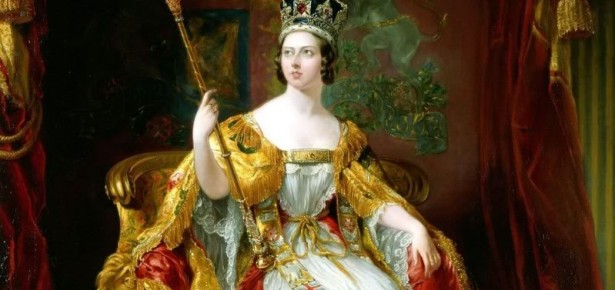
Why do we need another book about Queen Victoria? The last time I checked, there were over 1,500 entries for the Queen as a subject in WorldCat.
Yet on this, the 200th anniversary of Queen Victoria’s birth, I’d like to think that my book clears up some significant misunderstandings about the Queen, particularly on matters relating to sex, gender, and power. It also speaks to our current historical moment.
For too long, it was assumed that Victoria contributed very little to the 19th-century women’s movement, even as she served as head of state in Britain from 1837 to 1901. This is because Victoria issued some notoriously vicious statements about “women’s rights.” For example, she blanched at the prospect of women becoming doctors. And she was equally horrified by the campaign for female suffrage, which she described as a “mad, wicked folly.” She also took considerable pains to conceal her powers and forward an image of herself that was overwhelmingly maternal.
What I show in my book, however, is that most of Victoria’s remarks about women were not circulated publicly until after her death. And her efforts to hide her political engagement never fully convinced either. As a result, women’s rights activists had considerably more wiggle room when it came to leveraging the Queen than we have previously recognized.
In researching this book, I was struck by the degree to which Victoria featured in 19th-century women’s campaigning, especially in the struggle to obtain the parliamentary vote. As suffragists pointed out time and again, it was absurd that a woman ruled the nation given that her female subjects couldn’t even elect a political representative, let alone obtain a university education (until 1869) or keep their property once married (until 1870).
While Victoria did not align herself directly with the women’s movement, then, the fact of her rule proved incredibly useful to the cause. So “popular” was the sovereign in feminist rhetoric and campaigning during the 19th century, in fact, that the argument elicited a sizeable backlash from anti-suffragists and their allies, who felt genuinely threatened by the persuasiveness of this logic.
Beginning in the 1830s and accelerating from the 1860s, traditionalists tried to undermine suffragists’ tactics by insisting on Victoria’s very limited political rights, her reliance on experts, and her ceremonial status. In effect, they helped to define the remit of the modern constitutional monarch (eg the expectations we have for Queen Elizabeth II and her successors today).
Perhaps the most surprising – and significant – contribution of my book is its documentation of this counterattack. Although I had initially set out to look only at Victoria’s place within the women’s movement, I quickly realized that such a study had to engage with the movement’s critics. Victoria’s position vis-à-vis the Woman Question was a contested one, and debates about her usefulness to the movement animated Victorian politics. These debates not only helped shape ideas about Victorian womanhood, but also informed 19th-century understandings of constitutional monarchy and the gendered division of power. As I note in the conclusion, “[m]isogyny…played no small role in modernizing the monarchy.”
The Right to Rule and the Rights of Women: Queen Victoria and the Women’s Movement is available now.
Latest Comments
Have your say!